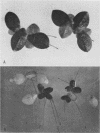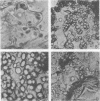Abstract
The duckweed Spirodela oligorrhiza, growing in sterile defined nutrient media, was used to study some responses of plants to phosphorus deficiency. On a phosphate-deficient medium, growth of Spirodela soon slowed and eventually ceased. Older leaves became chlorotic, but newly formed leaves were dark green and contained much anthocyanin. The photosynthesis rate fell gradually, roots elongated, and chloroplasts became filled with starch.
Nitrogen metabolism was not markedly affected: the total protein content changed only slightly, and, although levels of glutamine and asparagine increased, the concentrations of the other amino acids remained constant. The effects of phosphorus deficiency on Spirodela are discussed in relation to those found in other higher plants.
Full text
PDF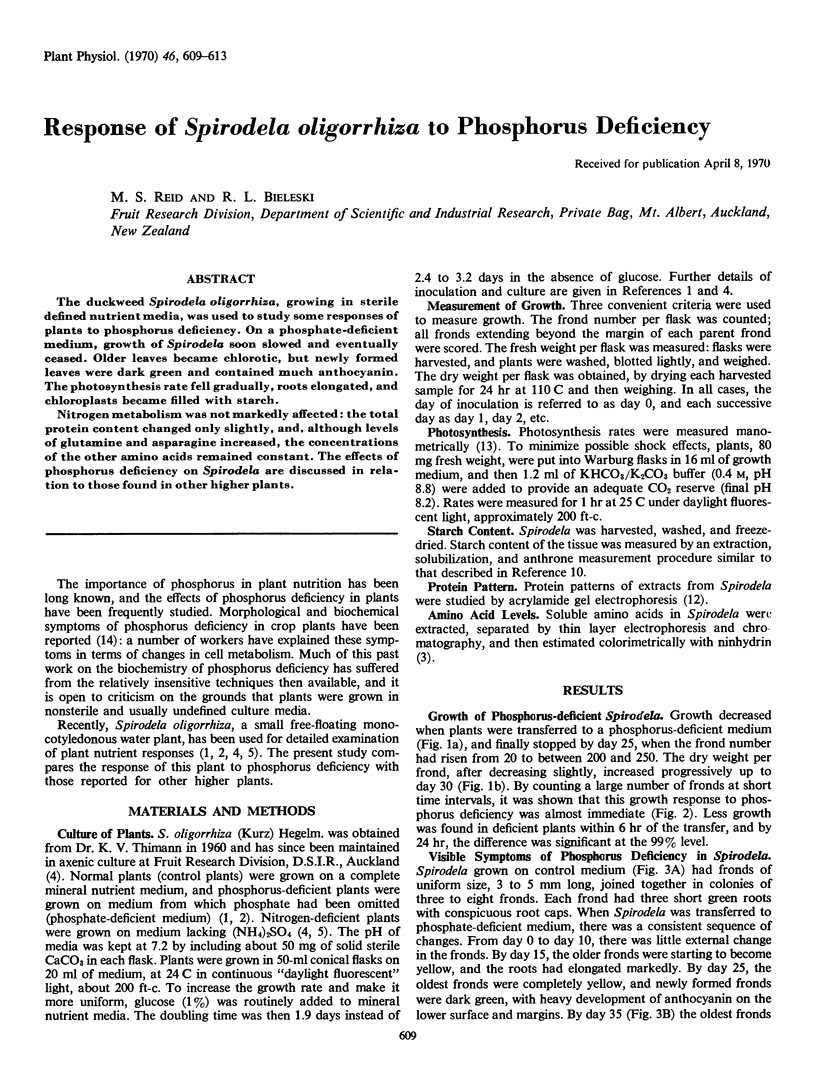
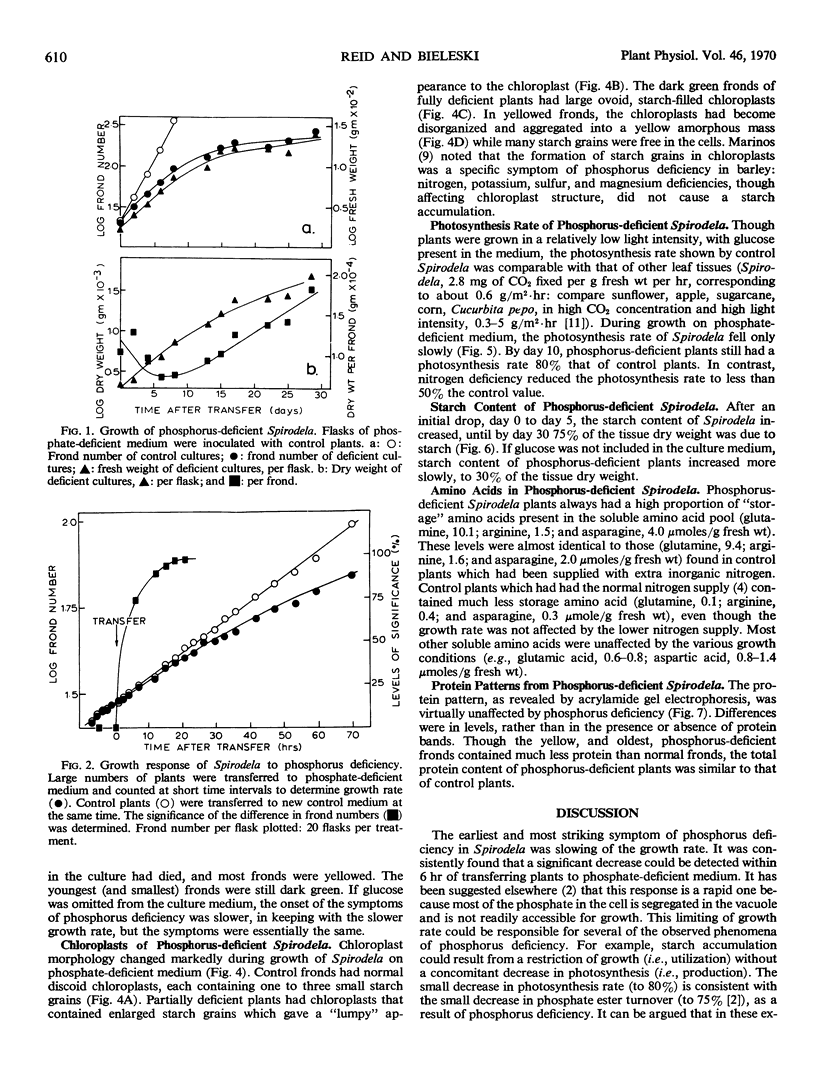
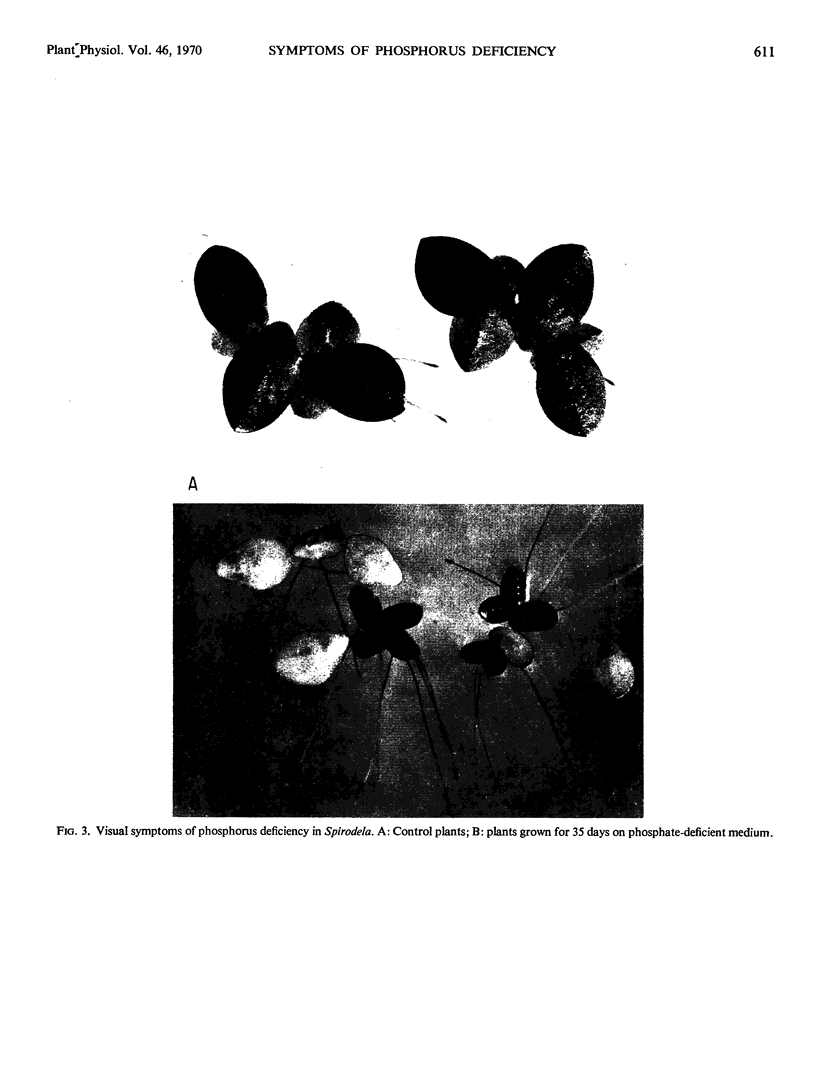
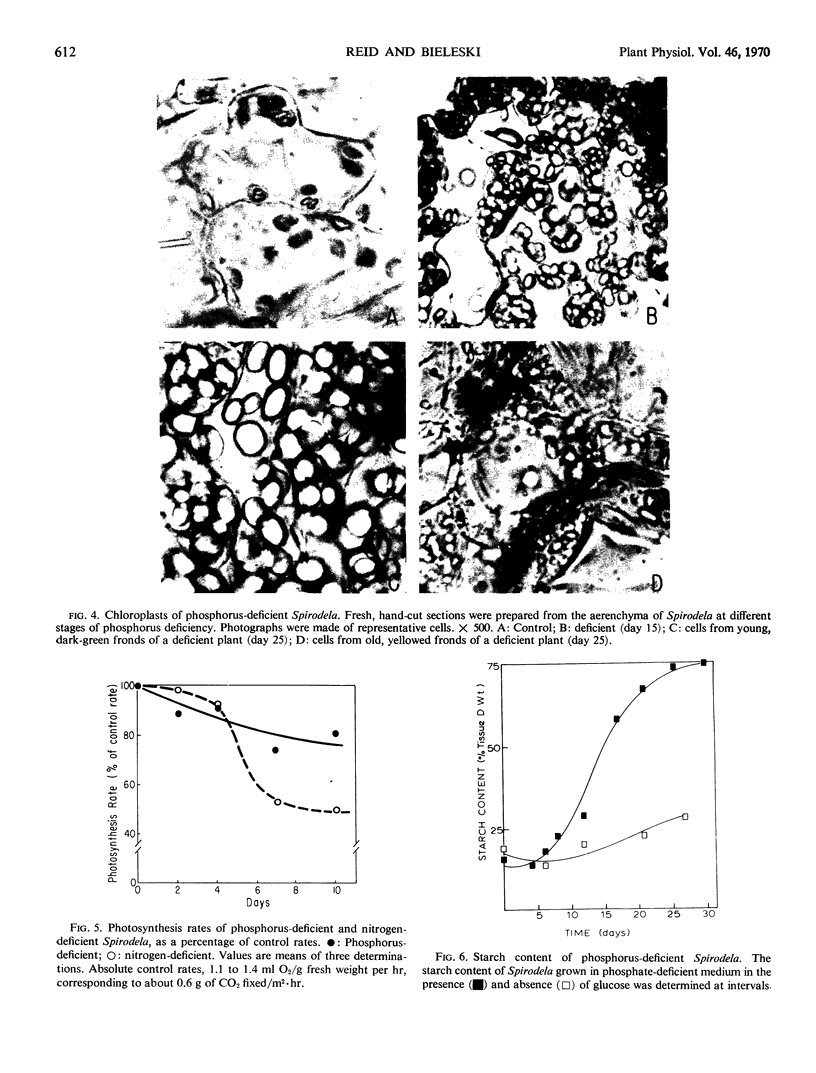
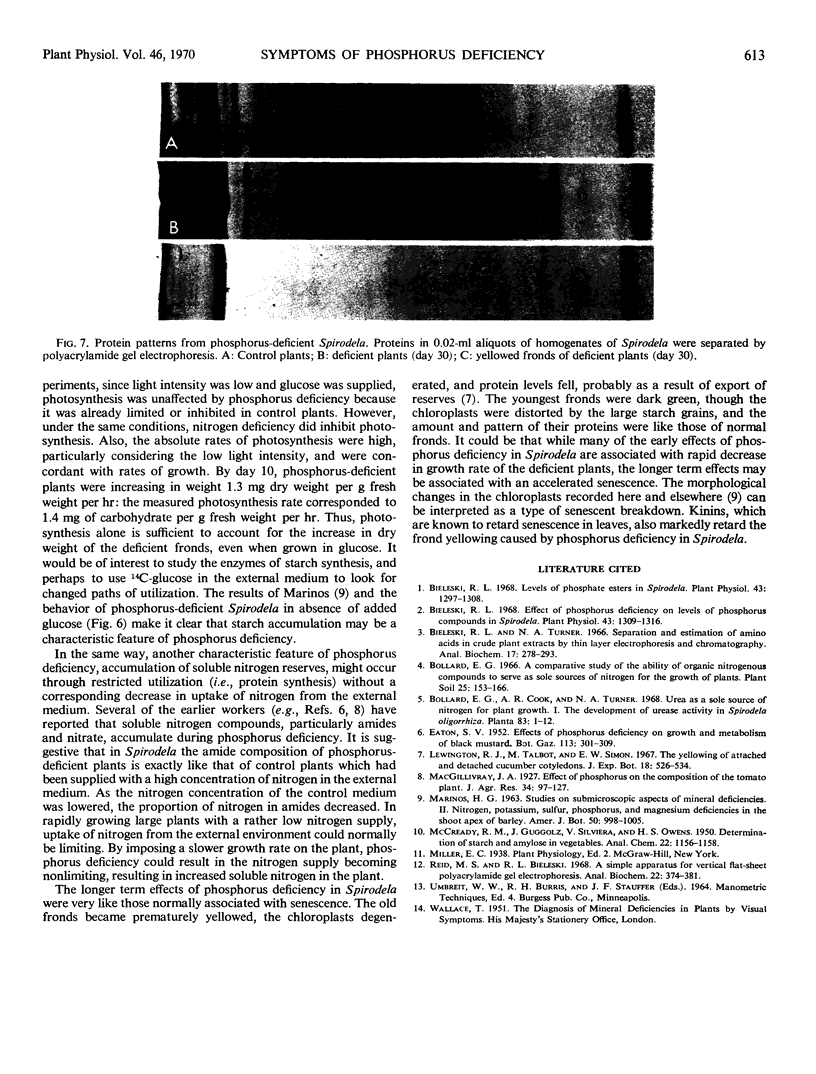
Images in this article
Selected References
These references are in PubMed. This may not be the complete list of references from this article.
- Bieleski R. L. Effect of phosphorus deficiency on levels of phosphorus compounds in spirodela. Plant Physiol. 1968 Aug;43(8):1309–1316. doi: 10.1104/pp.43.8.1309. [DOI] [PMC free article] [PubMed] [Google Scholar]
- Bieleski R. L. Levels of phosphate esters in spirodela. Plant Physiol. 1968 Aug;43(8):1297–1308. doi: 10.1104/pp.43.8.1297. [DOI] [PMC free article] [PubMed] [Google Scholar]
- Bieleski R. L., Turner N. A. Separation and estimation of amino acids in crude plant extracts by thin-layer electrophoresis and chromatography. Anal Biochem. 1966 Nov;17(2):278–293. doi: 10.1016/0003-2697(66)90206-5. [DOI] [PubMed] [Google Scholar]
- Reid M. S., Bieleski R. L. A simple apparatus for vertical flat-sheet polyacrylamide gel electrophoresis. Anal Biochem. 1968 Mar;22(3):374–381. doi: 10.1016/0003-2697(68)90278-9. [DOI] [PubMed] [Google Scholar]



